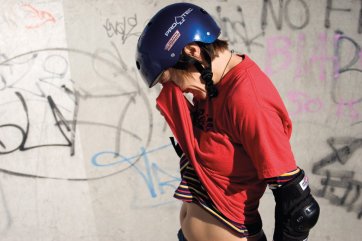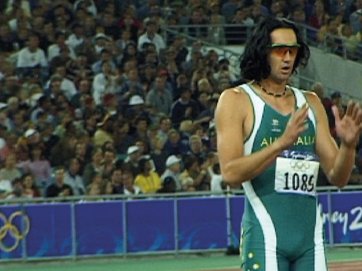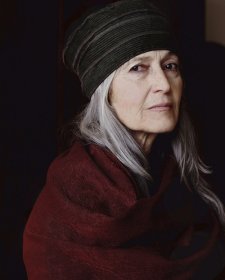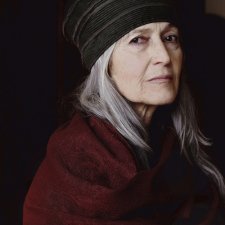Over the past ten years I have made portraits, intermittently, of champion athletes in preparation for competition. These are ‘moving image’ portraits recorded on domestic video cameras, with very little ‘action’ going on in the frame. (Basically, a bunch of well-known Australian athletes hang around and do nothing!)
While it may appear as if they are chilling out, what I am really interested in recording are the seconds, minutes or hours before the action begins: when an athlete must ‘psych’ themselves up – a process that is, as we all know from sports brand advertising, as much mental as it is physical. In many ways, these portraits are futile – they do not represent anything definite. They are portraits of people in the throws of an internal experience that is not apparent to us. This is the reason why I exhibit the video portraits in slow motion – every gesture and movement is potentially an expression of the athlete’s internal drama and/or meditation.
The first ‘psych sequence’ portraits I made were during the 2000 Sydney Olympics. I wanted to focus on the long-jumper Jai Taurima before his event. Jai was well known for his technique of screaming ‘come on’ (to himself and/or the universe?), and then after violently slapping his thighs two or three times, his hands would raise, palms and fingers stretched into what could be described as horse blinders. Blocking out all distractions for a precious moment he would then, just as his hands and arms lowered, simultaneously fall forward into his first stride down the runway (you really have to see this). It was a wild ritual he would repeat without variation for every jump during the Olympic heats and finals. While Jai’s passionate antics were well known to track and field fans watching the broadcast, there were other moments I recorded when he was extremely quiet and still – looking around at times, but with that thousand-mile stare. Kathy Freeman was also recorded half an hour before running. She too was pensive and slowly pacing. As she limbered her muscles, mental determination was written on her face, as well as a hell of a lot of pressure – what must have been the weight of the nation's expectations and hopes on her shoulders.
I was also interested in portraying extreme sports athletes as they face serious physical risk before events. In 2008, I chased Casey Stoner to Doha, Qatar, for the first Motorcycle Grand Prix race of the 2008 season. Casey was the defending world champion (and Young Australian of the Year) in that first race for 2008.
There was enormous pressure on Casey as I filmed him in the pits half an hour before he took to the grid. Amidst the chaos, Casey found a moment to meditate. Looking at this video, I see a man that must focus himself to such a fine degree that a split second’s hesitation could be fatal – at speeds exceeding 300kph. The video only shows Casey’s eyes but it’s all said right there.
For me, this moment of creative visualisation is where athletics and contemporary art are closest. Both endeavors attempt to push certain limits, and there is a great deal of mental and conceptual preparation in order to ‘just do it’.
If all this sounds like a very romantic idea for a series of portraits, it is, but there is also scientific thinking behind psyching oneself up. Psychoneuromuscular Theory states that an athlete can actually stimulate muscles by vividly imagining an activity. Therefore, these seemingly inactive sports stars could in fact be mentally competing and winning before they actually begin.

















